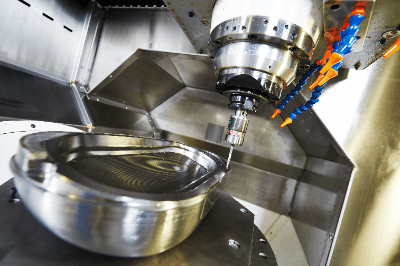What Is a Touch Probe?

Touch probes are contact-type sensors used to measure the dimensions of machine tool tools and workpieces with high precision.
Attached to the spindle or turret of an NC machine tool, the stylus is brought into contact with the object, and the coordinates measured with micron-level accuracy are fed back to the NC. When incorporated into a machining program, the system can be set to generate an error if the measured values exceed the allowable range. This makes it possible to instantly identify machining defects.
In addition, the measured values are sequentially stored in the NC. Analysis of these values can be applied to improve productivity and machining accuracy.
Uses of Touch Probes
Touch probes were originally developed for 3D measurement, but are now widely used on CNC machine tools such as machining centers and turret lathes. Touch probes are capable of making contact from multiple angles, making it possible to measure a wide variety of shapes.
For example, by measuring both sides of a workpiece, the distance between the two points can be determined, and at the same time, the geometry of both sides, such as flatness and parallelism, can be measured. It can also be used to measure the inside diameter and runout of a workpiece hole, the distance between the centers of multiple holes, and the external shape of a turned workpiece.
Principle of Touch Probes
When the stylus of the touch probe contacts the object, a signal is transmitted to the receiver, which feeds back the machine home position at that time to the NC to measure dimensions. There are several methods of transmitting signals from the probe, including inductive, infrared, and wireless methods.
1. Inductive Method
This is a method in which a module for signal transmission is installed in the receiver and probe inside the machine, and signals are transmitted by electromagnetic coils. Since the receiver and probe must be in close proximity to each other, the layout is quite restricted.
On the other hand, the power supply for the probe can be provided via the module, eliminating the need for a power supply for the probe itself.
2. Infrared Method
This method transmits signals using infrared rays. Compared to the inductive method, the infrared method has a much wider signal transmission range, which eliminates the problem of layout limitations. This transmission method is still used in many situations today.
3. Wireless Method
The radio method uses radio waves to further improve the signal transmission range of the infrared method. This method can be used for large machines and 5-axis machines with wide tooling zones.
Types of Touch Probes
Touch probes have been introduced on a wide variety of machine tools.
1. Touch Probes for Grinding Machines
Touch probes are used on grinding machines to detect wear of grinding wheels for cylindrical grinding and to measure the height of the workpiece to be ground. Since tools are changed manually on grinders, cable-communicating touch probes are widely used.
2. Touch Probes for NC Lathes
Touch probes are used on NC lathes to measure the inside diameter, outside diameter, and end faces of workpieces. Wireless touch probes are the most common type because they are connected to the turret.
3. Touch Probes for Simple Use
These touch probes are mainly used on general-purpose machine tools or as workpiece setup aids, and are of the analog type. Some probes use a dial cage to read values or LEDs to indicate contact.
Other Information About Touch Probes
1. Comparison With Manual CMMs
Although CMMs existed before touch probes were introduced, they manually pressed the measuring element against the object to be measured and the operator pressed a button to acquire data. This method has the problem that the operator presses the probe against the object to be measured, which causes errors in the values at the operator’s discretion.
The current touch probes do not have the accuracy error problem that occurs with manual operation, and measurements can always be taken with high accuracy.
2. Advantages of Touch Probes
Touch probes are now often installed on machine tools such as machining centers. On-machine measurement advantages of touch probes include the following
Reduction of Work Time
Work time can be reduced because there is no need to move from the machining center to the measuring machine and no need to set the origin on the measuring machine. Workpiece measurement can be performed on the machine, so rework can be performed after measurement is complete.
Reduction of Worker Burden
The workpiece does not need to be moved from the processing machine to the measuring machine, so the origin position remains the same. As mentioned above, the work to set the origin is no longer necessary, reducing the operator’s workload.